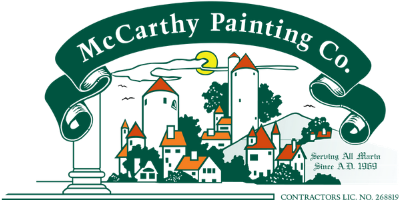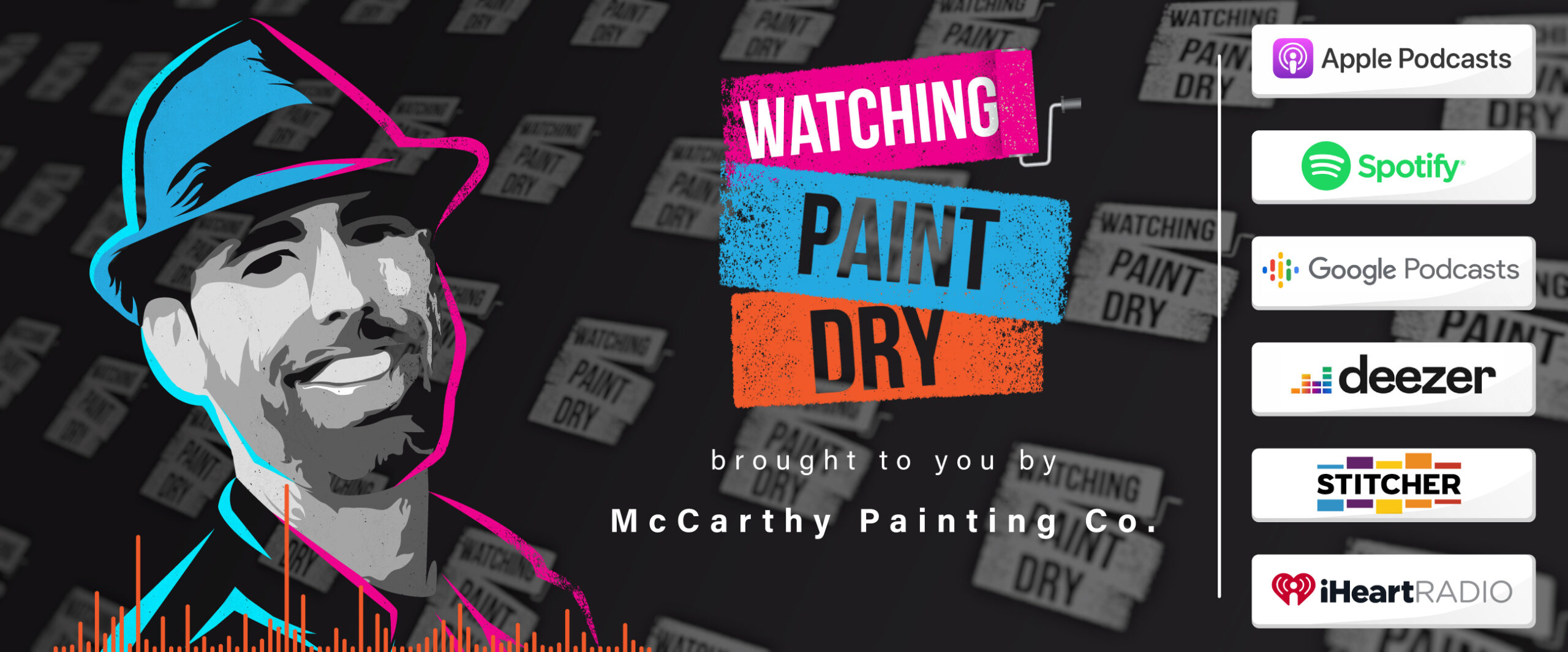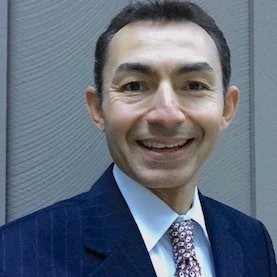Elias Nacif 16:53
yeah, over 100 employees working at some of these sites, right. So we have to organize them in a way that they come at different shifts, right, so that not everybody is sort of filling the lobby at once. And then you know, there’s a bunch of people together. So there was definitely a need to sort of reinvent the operation and the logistics to accommodate for all the new normal of COVID-19. But again, very easily done once people understood, right, and we haven’t had any any issues since then.
Greg Owens 17:27
I was just I was saying before we got on the call, we just had our first whole company meeting and we’re a much smaller company than you guys. Like. I think it was probably 18 people, you know, in our meeting and, and we had them all in a circle outside of Starbucks, and we had coffee and some hot food that we were you know, burritos that we can hand out to everybody and keep every and I was really happy to see that everyone was wearing masks and staying away from each other, except for the crews that work together on a like, we do work in pairs A lot of times, or we do have like family members. So like the dad and his two kids, they were all clumped together because they live together and they’re together all the time. And we actually have a we have a husband and wife team now because his it was really interesting. I show up to a job and I’m like, Who’s this lady helping the gal? And I’m like, wait, that’s Miguel’s wife. And I go over and I talked to her. And she’s like, well, I don’t have work because she was like a nanny, and that that that that job ended and she couldn’t find anything else. And I was like, well, you’re doing a really good job, like we need to put you on the payroll and get you working here. Because if you want Well, we know there’s work. You know, we’ve got stuff coming in. So it’s been it’s been interesting, what other what what has been like. So that was then and there was a tremendous amount of challenges, then, what do you see right now we’re in October, things are opening up, things are changing. There’s new information coming out? Not I mean, every week or so something new comes out. There hasn’t been a lot of case studies that I’ve seen around like the effectiveness of all this stuff. Where are you guys at now?
Elias Nacif 19:15
There we are. Everybody has their eyes in q4, right that the last quarter of the year for several reasons. I think primarily is the fact that the flu season is coming up right and the possibility of these two viruses sort of colliding right during this time and complicating things are pretty high. So we see sort of a mixed market where some of our customers have decided to not open their doors on till June or July of next year. And they made it very clear and communicated to everyone.
Greg Owens 19:46
And I think they even said that I think they even told people like we’re considering coming back to work in June, but it would be voluntarily voluntarily right to write like for the best for the big players. That kind of To drive San Francisco.
Elias Nacif 20:01
Right, exactly, exactly. And then we have other customers who are essential businesses. Well, like biopharma, as you know, biotechs, we’re actually working on the key who are right, that have operations 24, seven, they are going full steam, they haven’t stopped, and they have no plans of stopping, you’ve anything that you want to grow, you know, during this time. So we see a mix, we see a little bit more confidence to with many of the employers reopening their doors, or continuing to have reduced operations. Again, if the if a if a building had you know, 1000 occupants before, you know, maybe they are at 300 occupants, but they feel pretty good about having some cadence in their operation, right, there’s very clear established guidelines for those employees to operate, there’s very clear establish program to make sure that everything is disinfected appropriately. And you know, we apply some fogging and electrostatic spraying and when needed, and all of that just to make sure that we keep them safe. So it’s, I couldn’t quite say that there’s just one direction that everybody’s following. Everybody’s trying to come up with their own path, even.
Greg Owens 21:15
It’s culturally related to where and where the headquarters is related, right, from what I’ve talked to other facilities managers. And it’s interesting to hear, because like some of their like financial services in their headquarters is in North Carolina, they’re a little bit more like, Hey, we should get back in that building and go to work. Whereas if their headquarters here, and they’re high tech, they’re like, Oh, you guys could all stay home. And I Exactly, and I personally have you were talking about like, the 3000 and 6000, square foot spaces that you guys also do, like the smaller spaces. I personally have a lot of friends that gave up their leases in this time, when went remote. And they said to me, like, they’re never going back like this is worked really, really well for them. And they’re like, you know, they do programming. So if you can imagine, I can’t imagine sitting at a desk all day like that, right? They doing programming all day. And so they could just jump into a meeting and jump out and go back to programming. Right? It makes a lot of sense.
Elias Nacif 22:18
Yeah, it does make a lot of sense. The question in our minds is, how sustainable is that? right? Especially, you know, as I mentioned earlier, our culture is very vibrant, you know, we rely a lot of social interaction and getting together with folks and brainstorming and creating that last minute product out of a five minute hallway conversation, right? So those things don’t happen. So this big companies that are creating this products that revolve entirely around innovation, how is that going to be maintained over services like zoom? Right, or WebEx or whatever the case? So that’s the question, right? And the other question is, well, we still have millions of, you know, of buildings, healthcare, right, have millions of square feet of buildings and the built environment here. They need to be maintained, right? Because if they don’t, those those assets are just gonna collapse, right? They’re not gonna look good, they’re gonna lose value. Nobody wants that in their portfolio. So. So yeah, there’s there’s a lot of questions. But at the same time, there’s a lot of hope, right? Because we see those companies who are very clear with their vision and their mission, they’re sticking to their plans are going to make it happen, no matter what happens, right. And we want to be here to support those companies and be innovative, and do what we can right to contribute to their growth.
Greg Owens 23:39
Yeah, absolutely. And I, as you were talking, I was thinking about your culture being service to service industry, right. And our culture being painters does have a lot of similarities in that our employees are super used to moving all the time, right, they’re using their bodies are moving, I mean, the vast majority, even for yourself, I bet like, right, you’re not spending huge amounts of time at a desk, you’re actually at sites, looking at things, troubleshooting, helping employees navigate, you know, the, the different buildings you have to go through. And, um, and that’s part of our personalities, though, too, right? Like, where we actually we really like feed off of that, you know, and I’ve done quite a few different zoom calls now for proposals and that kind of thing. And they’re walking through and it’s not the same for me at all. I gather so much information by walking to space and feeling it right.
Elias Nacif 24:35
Absolutely. Yes, a huge part. It actually is my favorite part of the job you do. That is going to the customer size, right talking to the customers understanding and bringing the solutions and because we have, you know, roughly 300 customer sites in the Bay Area alone, you know, we get exposed to a lot of best practices and innovation right? And our customers are such that they want to share those with the rest of the world because they want the whole This tree to elevate, right? So when we see, hey, what is the best practice in sustainability with regards to waste management or energy efficiency? Hey, you spread that around, right? So we love to bring those ideas to our other customers so that everybody can benefit.
Greg Owens 25:14
And that’s like a whole nother division that you guys have. It’s just it is consulting, sharing that and not maybe you don’t even do the maintenance and cleaning for that company. But you have like, here’s the best practices that we’ve found in recycling. That’s great. That is wonderful. And I like what you said earlier.
Elias Nacif 25:30
So waste management is one of those those big
Greg Owens 25:33
Yeah. Yeah, so so I like what you were saying earlier, too, about, like, even if these buildings are, there’s no people in them, there still has to be like, they’ll get hanger rot. They’ll have problems. We were talking to a to a guy from Scotland. And, and he was talking about because they have really old buildings. I mean, we think we have old buildings, but not even close. Right? Like, he has a picture of a castle that’s like right behind his house. Like it’s, that’s ancient.
Katrina Hayes 26:06
And it was on Game of Thrones. Wow. Yeah. Pretty cool.
Greg Owens 26:12
It was really it was really cool. And but he was talking about, like, you know, within buildings, you can start to get like Legionnaires disease if you’re not going through and clean hpac and taking care of things and letting things sort of mechanically move because it sort of almost needs human beings in there to make keep the whole the whole thing working well,
Elias Nacif 26:33
yes, yes, exactly. Yeah, we cleaning is, again, it’s one of those things that COVID has brought up to the highest level of priority compared to before, right. And it’s not just cleaning for aesthetics, because that used to be the case, hey, we want our lobby to look clean. Right? What can we do Eli is to make sure that this customer interfacing area looks fantastic, great, no problem. Now it’s look beyond that, right? It’s cleaning for health is making sure that you know, we’re attacking the bacteria, the viruses, anything that can create a health problem for building occupants.
Katrina Hayes 27:07
And I have a question about that as a fellow clean, really clean person. A lot. Are there any special products out there that that you guys have been using and working? Well, besides bleach? Or?
Elias Nacif 27:22
That is? That is an excellent question. So we we don’t use bleach actually at the commercial level? Yes, we have a variety of products out there and medallion has been known for trying to be as green of a company as possible, right? So we follow you as GVC standards are set for lead. Sometimes well standards depending on the property where we’re doing business. So what that means is that they are a range of disinfectants out there and that are made out of plant based products right. Specifically the essence time time all is a product which are very effective at killing Coronavirus. Right, and other bacteria and or inactivating the virus, I should say. And we just four minutes of dwell time and then this products require the least amount of PBE. You know, they’re not harmful for the employees are not harmful for the
Greg Owens 28:16
for the user mental long is incredibly hard.
Elias Nacif 28:20
Oh, yes. Yes. Difficult on people on surfaces, right?
Greg Owens 28:24
Everything? Yeah,
Elias Nacif 28:25
yes. Yeah, the indoor air quality just completely, you know, comes down because there’s so much voc is in the year. So this products are really good. happy to send you something afterwards. If you’re interested in
Katrina Hayes 28:35
wonderful,
Greg Owens 28:36
yeah, we we’ve used, um, tea tree oil for green. But I’m involved in a martial art studio and for cleaning the mats and everything, you know, yeah. tree oil and mix that with water and stuff. And that’s been? I don’t know, time is probably even more even more powerful. Yeah, it’s strong. I know. I am like a little vial of it in my medicine cabinet. Yeah. It’s it’s strong stuff.
Elias Nacif 29:03
Yeah, it’s really good. It’s really good. And then the thing about cleaning too, is that with any new need, right, there’s a bunch of companies that try to take an opportunity to come into the market with new products, right. So So the good thing again, is that there’s been a lot of development of products and tools, right specifically to apply these chemicals. So you’ve probably seen pictures and LinkedIn of you know, people fogging. Right. And using electrostatic sprayers, all those technologies are fantastic for the right application, right? What we’re trying to do with our customers is educate them in that look. Yes, fogging is good, but it’s not for every application, you have to think about what is your end goal, right? What are your finishes where it was the environment, right? What is the product that you’re applying? And then you know, target the application method based on that, you know, and goal. So, yeah, it’s important for us now to ask the questions right. Okay, let’s, let’s really dissect you know, as clearly as possible what the goals are and what the risks are. So, we can come up with the best possible solution right and not waste product not you know, have employees be at risk right of inhaling This in fact, then that is right oxide right? Or it is going to remain in the air gets sucked into the vacuum go to another office, you know, we don’t we don’t want
Greg Owens 30:23
it looks impressive when you see China and they’re like, walking down the street and I’ve got like a bazooka like something out of Ghostbusters that they’re like, hogging the entire street, you’re like, Whoa,
Elias Nacif 30:34
I don’t want to be there.
Greg Owens 30:35
I don’t want to be there. Exactly. This is they’re using some kind of agent orange or something like that.
Elias Nacif 30:42
Yeah, yeah.
Greg Owens 30:43
Is it even needed? Right? Like, cuz like, if this stuff is doesn’t last long on a surface, and you can just clean it by wiping it up? And that’s the touch point. And that’s the minimal amount necessary to get the job done. Right.
Elias Nacif 30:56
Exactly.
Greg Owens 30:57
Yeah. I don’t think you need the fog all the air or get it into, into the into the AJC
Elias Nacif 31:02
exactly Stargate applications, you know, for specific areas. So you are the most effective and the least wasteful, right? And anything from PP to chemicals to time, right? As you know, right. Most of the value that we bring to our customers is time or labor, right?
Greg Owens 31:18
We are the materials is hardly any, between your company and ours, right. Like paint is, I mean, it’s more expensive than a lot of cleaning product yet, but it’s so little compared to the
Elias Nacif 31:29
it is very little compared. Absolutely.


